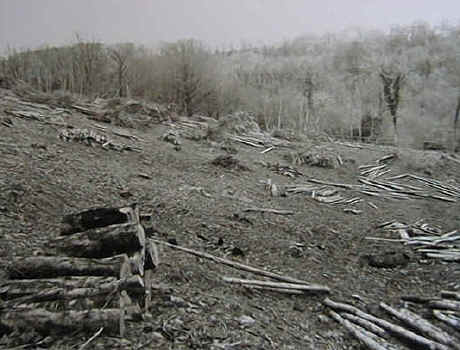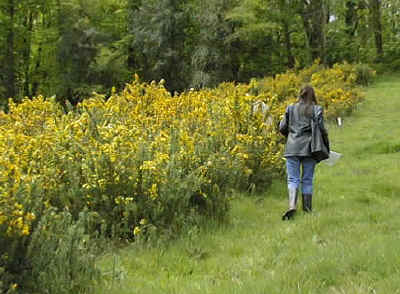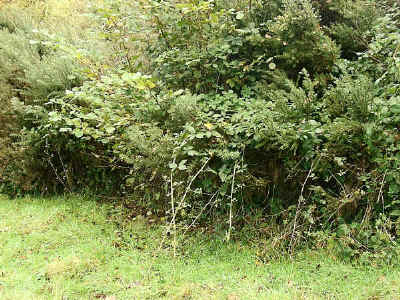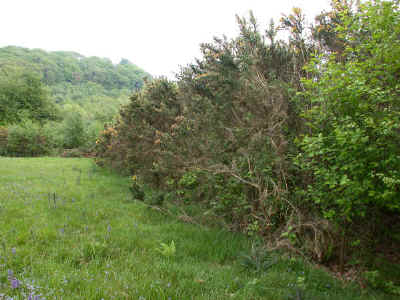Secondary Succession
Primary Succession

Secondary succession is the series of community changes which take place on a previously colonized, but disturbed or damaged habitat. Examples include areas which have been cleared of existing vegetation (such as after tree-felling in a woodland) and destructive events such as fires. Secondary succession is usually much quicker than primary succession for the following reasons:
The Heathland Project site at the Woodland Education Centre provides a good example of secondary succession in action. The area was cleared of mixed woodland, with an understorey of rhododendron, in 1993 (picture above). It was then treated with Roundup, a biodegradable herbicide, to clear the site of all existing vegetation. The site has since been divided into nine different strips and it has been allowed to regenerate naturally. Different management methods are used on the strips, with the aim of determining which is the best method for regenerating heathland. One of the strips has been left untouched to act as a control strip. It is this strip which provides an excellent example of secondary succession. Initially (1996), the control strip was dominated by grasses such as Yorkshire Fog (Holcus lanatus) and Common Bent (Agrostis capillaris). Heather (Calluna vulgaris) was present in small quantities, together with European Gorse (Ulex europaeus) and tree seedlings, such as Birch (Betula spp).
Eventually, the Gorse will be shaded out by the developing trees. In time, the strip will become a miniature wood. However, this will not be the climax stage in the succession. The Rhododendron will form an understorey under the mature trees. The extreme shading effect of the Rhododendron will prevent anything from growing underneath. When the mature trees eventually die, there will be no tree seedlings or pioneer species able to replace them and the Rhododendron will take over completely. Without intervention, the climax stage in the succession will be Rhododendron. This non-native species causes extensive ecological damage to native habitats.
|
||||||||||
Continue to


